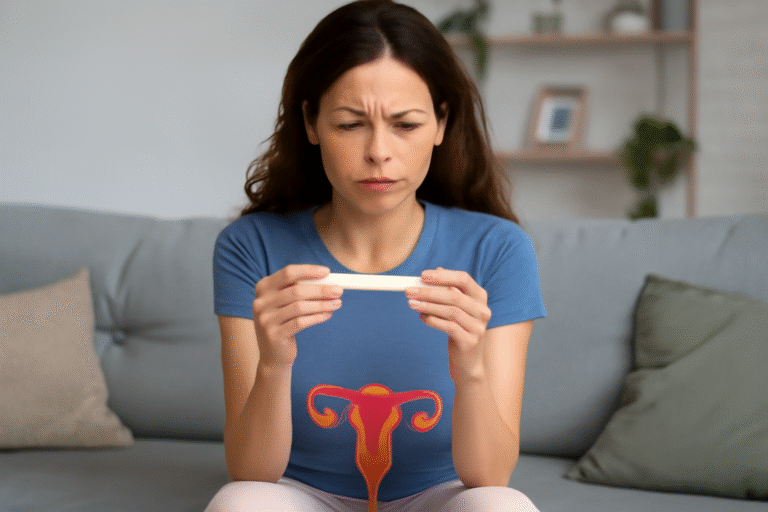One of the most important times in your IVF journey is the hours and days after your embryo transfer. Although the medical treatment is finished, your body now enters a fragile window during which the transferred embryo has to successfully implant in the uterine lining. This time calls for emotional resilience as well as careful physical precautions. Knowing precisely what is happening biologically will enable you to decide wisely on your post-transfer care. The embryo will hatch from its shell and start the implantation process, burrowing into the nutrient-rich endometrium during these first vital days, where it will hopefully create the early placenta and pregnancy.
The First 48 Hours: Perfect Environment for Implantation Of Embryo Transfer
Your reproductive endocrinologist has probably provided particular activity level guidelines right following your embryo transfer. Although you may be tempted to stay totally sedentary, studies indicate that moderate exercise really helps implantation by increasing healthy blood flow to the uterus. Finding the correct balance between rest and mild activity is essential. Though it doesn’t imply rigorous bed rest, many clinics advise the first 24–48 hours to take it easy. Prolonged immobility, in fact, can cause less circulation and even higher blood clot risk. Rather, concentrate on calm activities such as reading, light television viewing, or quick, leisurely strolls around your house
Embryo Transfer Hydration Secrets: The Hidden Key to Implantation Success
Many patients underestimate the importance of appropriate hydration in the implantation process. To keep its best structure and receptivity, your uterine lining needs sufficient fluid levels. Dehydration can cause the endometrial tissue to lose flexibility, which could lead to a less welcoming situation for the embryo. Aim to consume at least 8-10 glasses of water each day, and think about including coconut water, which is rich in electrolytes, to assist with absorption. Many fertility doctors advise keeping track of your urine colour; it should be pale yellow, suggesting adequate hydration. Be careful that certain fertility drugs could raise your hydration requirements; avoid too much coffee, which can be a diuretic.
Embryo Transfer Nutrition: Foods That Nourish Your Growing Hope
Your post-transfer period dietary decisions can greatly affect the implantation environment. Concentrate on eating whole, nutrient-rich foods that offer the building blocks for early pregnancy. While good fats from avocados, nuts, and olive oil help preserve appropriate hormone balance, protein-rich foods like eggs, lean meats, and legumes promote cellular growth and repair. Cruciferous vegetables like broccoli and Brussels sprouts offer vital phytonutrients; fibre-rich diets help fight the constipation usually brought on by progesterone supplements. Though more studies are required in this field, some studies indicate that foods high in antioxidants, such as berries and dark leafy greens, may help implantation. On the other hand, stay away from processed foods, too much sugar, and alcohol, all of which can cause inflammation.
Embryo Transfer Medication Mastery: The Lifeline Your Embryo Needs
Usually including progesterone support in either oral, injectable, or vaginal form, your clinic will give particular guidance on maintaining drugs following transfer. Maintaining the uterine lining and supporting early pregnancy depend on these hormones. Establish a method to guarantee you never miss a dose; phone alarms, pill organizers, or medication tracking apps can all be useful. Should you be on vaginal progesterone, you could see more discharge; this is usual and does not suggest the drug is ineffective. Keep taking any recommended prenatal vitamins; before using any extra supplements, talk to your doctor. During this sensitive time, some supplements like high-dose vitamin E or particular herbs might have to be paused.
Also Read: Learn About Frozen Embryo Transfer
The Emotional Rollercoaster: Navigating the Two-Week Wait
One of the most psychologically demanding parts of IVF can be the time between embryo transfer and your pregnancy test, often known as the “two-week wait.” From hope and excitement to anxiety and fear, it’s absolutely natural to feel a great spectrum of emotions. Many patients find it useful to accept that these emotions are a natural reaction to a naturally stressful situation. Think about including gentle yoga, deep breathing exercises, or meditation in your daily mindfulness routines; skip any abdominal twisting or compression. Another useful way to handle your feelings during this trying time is journaling. Whether via support groups or online communities, some patients find solace in interacting with others undergoing similar situations.
Physical Activity: Finding the Right Balance
Though complete inactivity isn’t required or good, you’ll want to avoid rigorous exercise during the post-transfer time. Usually, light walking is recommended since it encourages good circulation without jarring motions that might interfere with implantation. Most clinics advise against any exercise that significantly raises your core body temperature (such as hot yoga or strenuous cycling) as well as high-impact activities like running, jumping, or vigorous aerobics. Activities that engage the core strongly (such as crunches or planks) should be avoided; weight lifting should be restricted to very light weights (under 5 pounds). Your body knows best; stop right away if any activity causes discomfort or strain.
Recognizing Normal Symptoms vs. Potential Concerns
You might experience different physical sensations in the days after transfer that could be both thrilling and anxiety-inducing. Common and usually caused by the embryo embedding itself in the uterine lining or from the progesterone supplements, are mild cramps. About 6-12 days following transfer, some women experience mild spotting—implantation bleeding—which might show as pink or brown discharge. Common side effects of progesterone include breast soreness, bloating, and weariness. Red flags that call for quick contact with your clinic, though, are intense pain, significant bleeding (like a menstrual period), or fever. Remember that some women have no symptoms at all yet still have successful pregnancies
The Importance of Temperature Regulation
During the post-transfer phase, keeping a normal body temperature is absolutely vital. Avoid anything that could greatly increase your core temperature, including hot tubs, saunas, steam rooms, and even very hot baths. High temperatures might disrupt implantation and harm the growing embryo. Keep your surroundings at a reasonable temperature and take warm (not hot) showers. Avoid extended exposure to extreme heat if you live in a hot climate or it’s summer; stay in air-conditioned areas when feasible. Many fertility drugs can increase your sensitivity to temperature changes; thus, this caution is especially crucial.
When to Resume Normal Activities
Your personal situation and your clinic’s advice will determine the timetable for resuming your normal routine. While some women would rather stay more cautious until their pregnancy test, many find it comfortable to progressively raise their activity level after the first few days. You can probably go back to work within a day or two if your job is not physically taxing. For more physically demanding jobs, you could have to change your responsibilities or use more time off. Most clinics recommend waiting until after your first ultrasound—usually about 6-7 weeks—before starting up more vigorous exercise programmes. Any particular questions about activity levels should always be discussed with your reproductive endocrinologist.
Preparing for the Pregnancy Test: Managing Expectations
You might be tempted to take early home pregnancy tests as your planned blood test—often 9 to 14 days after transfer—draws near. Although understandable, early testing might occasionally cause false negatives (especially if done too soon) or unwarranted anxiety from unclear findings. Should you decide to test early, keep in mind that most home tests won’t provide accurate findings until at least 7-10 days post-transfer for a 5-day embryo. Whether that means celebrating carefully or having emotional support prepared if the news isn’t what you hoped, consider having a plan in place for either outcome. One cycle’s result does not foretell future success; many women need several transfers before becoming pregnant.
Looking Ahead: Next Steps for Either Outcome
Your results won’t change your preparedness. If positive, you’ll continue progesterone and monitor hCG levels before an early ultrasound. If negative, consult your doctor about stopping medications and next steps – most recommend waiting one full cycle before another transfer. Use this time for self-care, whether taking a break or preparing for another attempt. Remember, every IVF journey is unique, and your resilience matters most, regardless of the outcome.





[…] Post-Embryo Transfer: The Comprehensive Checklist […]